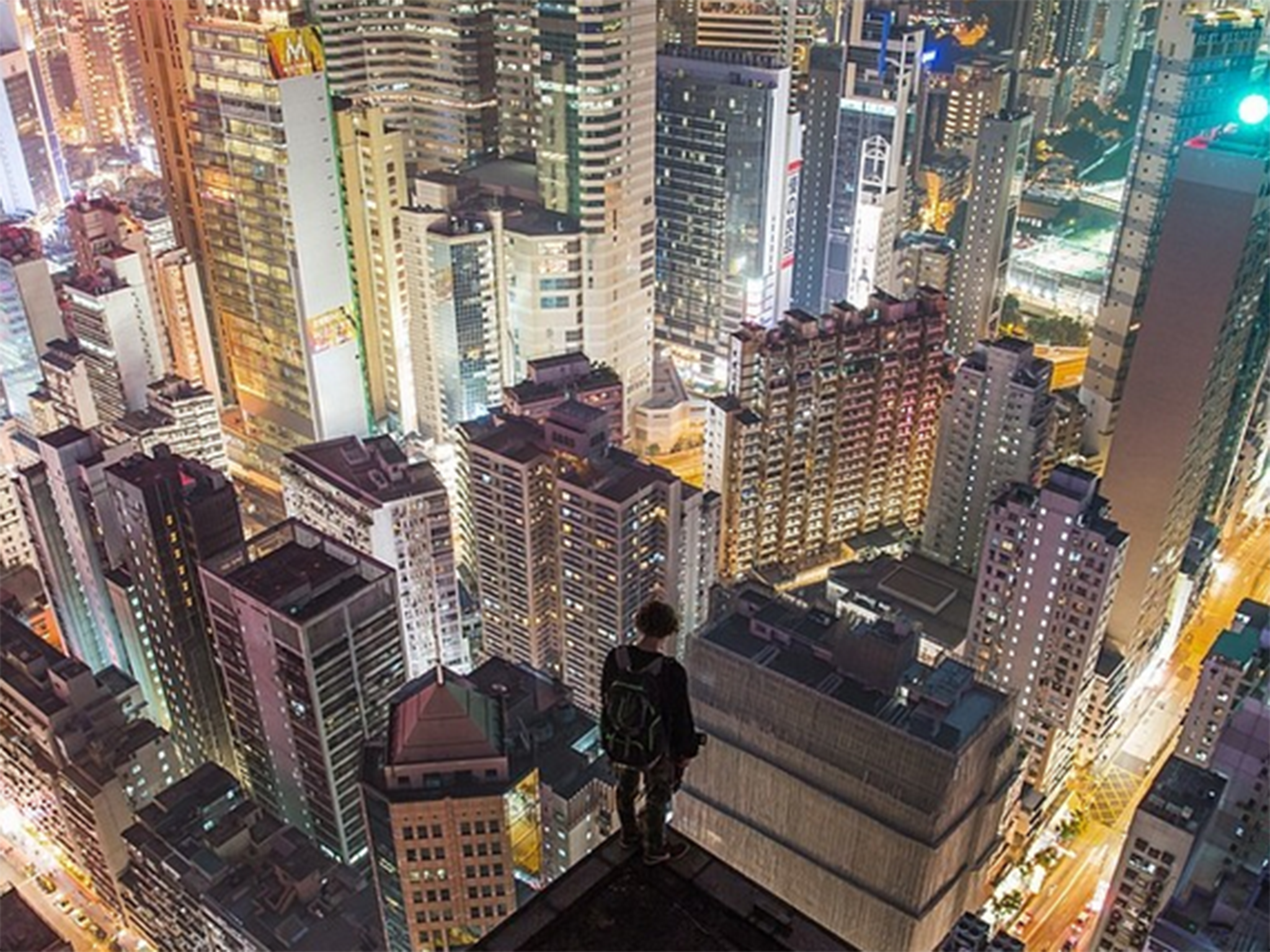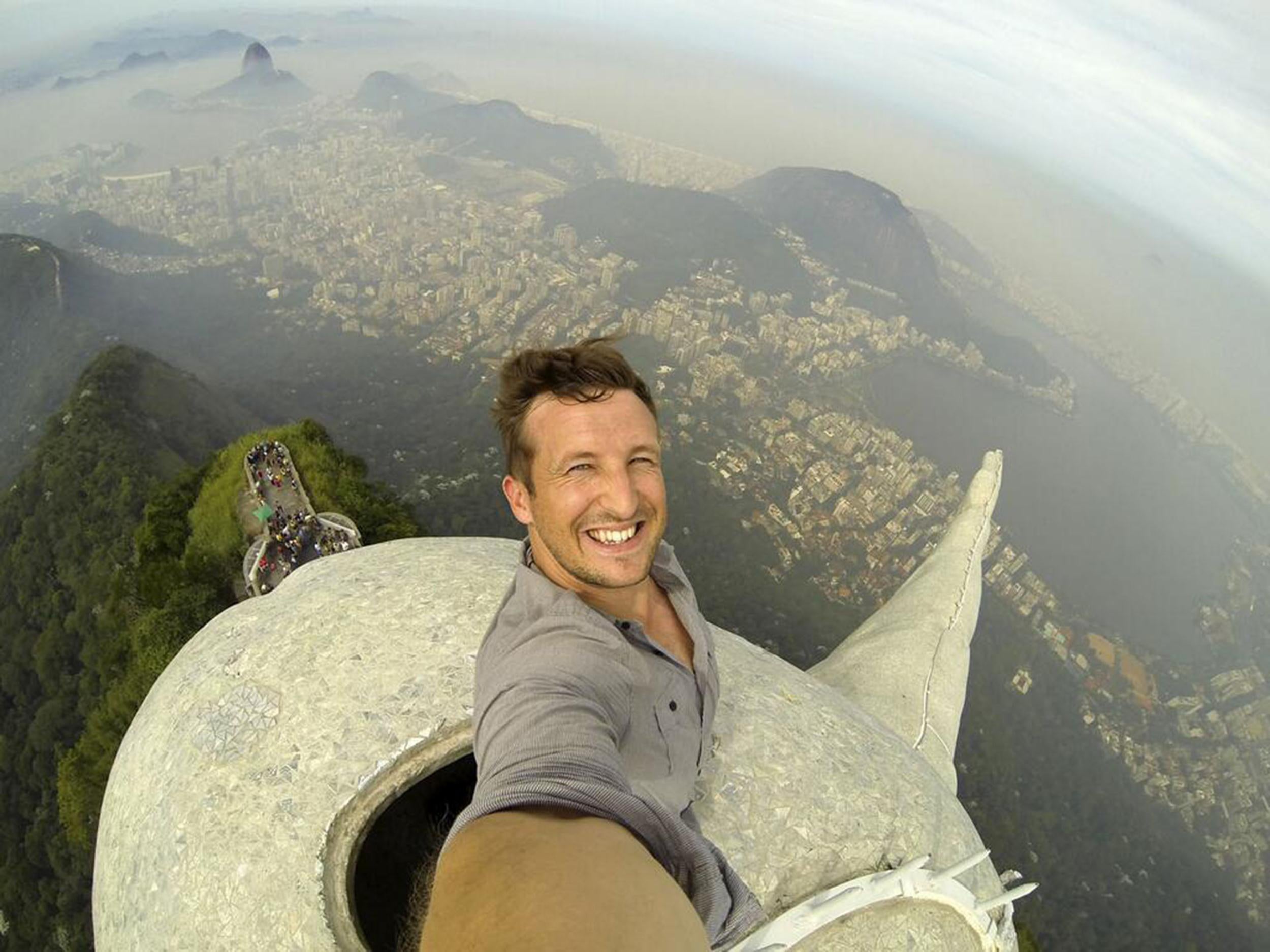Outlaw Instagrammers: The daredevil photographers racking up thousands of followers
Incredible pictures from 'outlaw Instagrammers' have captured the internet's imagination

Your support helps us to tell the story
From reproductive rights to climate change to Big Tech, The Independent is on the ground when the story is developing. Whether it's investigating the financials of Elon Musk's pro-Trump PAC or producing our latest documentary, 'The A Word', which shines a light on the American women fighting for reproductive rights, we know how important it is to parse out the facts from the messaging.
At such a critical moment in US history, we need reporters on the ground. Your donation allows us to keep sending journalists to speak to both sides of the story.
The Independent is trusted by Americans across the entire political spectrum. And unlike many other quality news outlets, we choose not to lock Americans out of our reporting and analysis with paywalls. We believe quality journalism should be available to everyone, paid for by those who can afford it.
Your support makes all the difference.Some scale bridges and skyscrapers to capture gorgeous cityscapes. Others turn the camera on themselves, dangling their feet over the edges of rooftops while smiling for vertigo-inducing selfies. Still others capture videos of dizzying vistas.
Forty years after Philippe Petit dazzled New York City by crossing a high wire between the twin towers of the World Trade Center, a new generation of daredevils is using smartphones and social media to redefine urban exploration in cities around the globe.
Success is measured in the currency of likes and follows from fans on Instagram, Twitter and Facebook.
There isn’t yet a widely-used term for what they’re doing. Some call it “rooftopping.” New York Magazine dubbed one group of New York City daredevil photographers the “outlaw Instagrammers.”
In Russia, where the subculture has achieved particular popularity amid domestic turmoil, they’re called “skywalkers” or “roofers.”
It’s not clear when the phenomenon started. But the subculture is beginning to bubble into the mainstream, powered by a potent mix of powerful smartphone cameras and savvy social media distribution. EBay is even appropriating the iconography to sell gear like the so-called “selfie stick.”
Prominent daredevil photographers tend to fit a certain profile. They’re young artistic types and usually, but not always, male. Many of them hopscotch the globe, snapping cityscapes in the world’s great urban spaces.
They’re also not afraid to walk along narrow planks or peer over edges hundreds of feet above the ground.
“Simply put, the rewards outweigh the risks,” Tom Ryaboi, a Toronto-based daredevil photographer, said in an e-mail. “Feeling the city from an unobstructed view is magical, and worth all the risks associated.”
Ryaboi began exploring rooftops in Toronto in 2007, accompanied by his camera and a friend. In 2011, he took one of the most widely disseminateddaredevil photos, a shot titled “I’ll make ya famous” that depicts a model’s blue-jeaned legs dangling off the side of a Toronto building.
Today, Ryaboi has more than 10,000 followers on Instagram, where he posts cityscapes under the handle roof_topper, his aim being to “take and publish photos that I think tell a story.”
Pamela Rutledge, director of the Media Psychology Research Center and a scholar of selfie culture, said that daredevils who scale urban heights for a photo should be understood differently from other “extreme selfie” enthusiasts who put themselves in harm’s way. While urban explorers do gain validation from their social media audiences, they also are motivated by other factors — a desire to create art, for instance.
“People aren’t going to do something they wouldn’t already be willing to do just because they have 10,000 followers on Instagram,” Rutledge said.
Since Ryaboi and other early pioneers began posting their work online, the subculture has expanded in following and form.
In a YouTube video posted last week, a trio of daredevils ascended to the spiral atop a Hong Kong skyscraper. Two of them munched on bananas, while the third captured video of the stomach-dropping view beneath them. Less than a week after being posted, the video had more than 1.4 million views.
Daredevil photographers strike a delicate balance as they sometimes tread into spaces which might be legally off limits. As New York magazine’s Adrian Chen put it, the outlaw Instagrammers are “transgressive enough to be cool, but innocuous enough to amass a huge following without getting hunted down by the NYPD.”
Still, some would-be daredevil photographers are being chased down by law enforcement.
This week, a Russian man who scaled the Brooklyn Bridge to take a selfie was arraigned for reckless endangerment, among other charges, and forced to give up his passport.
Responding to the incident, Brooklyn Borough President Eric L. Adams said, “It is clear that we are not doing enough to prevent foolish selfie-takers and statement-makers from putting themselves and others in harm’s way,” Metro.us reported.
Of course, the photos are not always illegal. In one stunt this summer sanctioned by Brazil’s tourist board, the travel blogger and photographer Lee Thompson took selfies atop the Christ the Redeemer statue in Rio de Janeiro, Brazil.

Although the subculture has been fueled by social media, it is not entirely a product of the 21st century. “Photography and testosterone have gone together for a very long time,” said John Edwin Mason, an associate history professor at the University of Virginia who studies the history of photography.
Mason sees precedents for today’s daredevil photography subculture in the 19th-century exploration of the American West, when “you would find photographers going to extraordinary lengths to get their big heavy equipment over mountain tops and cliff faces.” Another predecessor is the magazine National Geographic, which has “built its reputation on photographers doing some really risky, incredible stuff,” Mason said.
Rutledge said she is not surprised that the subculture has gained widespread attention of late. She pointed to the community’s growing size, the ease with which online content now goes viral and the appeal of beautiful photography in a world roiled by turmoil.
“The world has a lot of trouble in it right now. To look at something that is not part of that trouble is a comfort,” Rutledge said. “It is something that gets your attention and moves it away from other troubles.”
Copyright The Washington Post
Join our commenting forum
Join thought-provoking conversations, follow other Independent readers and see their replies
Comments